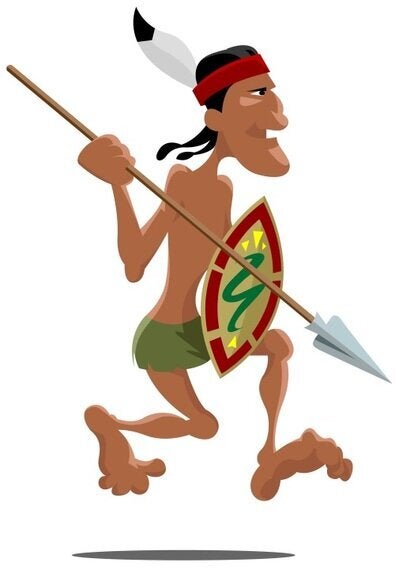As I sat with my husband on the sofa after putting our kids to bed, we collapsed on the sofa to watch some TV (prerecorded, of course). While we fired up our screens for a leisurely evening of media consumption, surfing and mild conversation. It was then that the term 'native advertising' popped up (as it only can when two digital advertising professionals are married) and I must confess to being confused as to what it is (or isn't). I then attending some Adweek sessions on the topic, and was even more confused as I was transported 7 years back during the discussions. I then decided to demystify this subject for myself and anyone else scratching their heads in order to preserve our sanity (and our scalps!).
Native advertising is the latest buzzword and trend in the online advertising industry with brands and publishers creating new departments, conferences allocating extensive covering and new companies are sprouting up with their offerings. Read on for 11 key things you need to know about native advertising.

1.Native Advertising Has Different Definitions
I discovered several different definitions as native advertising appears to mean different things to different people. According to Wikipedia, "Native advertising is an online advertising method in which the advertiser attempts to gain attention by providing content in the context of the user's experience. Native ad formats match both the form and function of the user experience in which it is placed."
Many professionals surveyed in the #StateofNativeAdvertising2014 survey consider Native Advertising to be sponsored content (53%), featured content (47%) or content 'brought to you by' (45%) whereas 38% felt that company branded pages and 25% felt that microsites were Native Advertising. Reuters' Felix Salmon contends that the difference between sponsored stories and native advertising is that "native content tends to aspire more to going viral" and generally being shared more.
It is important to note that Native Advertising seems to be more of a technique than a format, a way of ensuring contextual relevance, regardless of the format, with an element of shareabilty.
The lack of clarity around a definition makes it difficult to establish best practices, which is why the IAB in the USA created a task force aimed specifically at locking down a definition. They have since come up with the IAB Native Ad Playbook.
2.Native Advertising is Not New!
Are you thinking what I'm thinking? Yes, everything mentioned above is not new! The only thing new is the Jargon. Actually, come to think of it, not even *that* is new as we have used "native" to previously refer to Digital Natives and Digital Immigrants when referring to the different audiences familiar with the digital world.
3.OK, the Platform Part is New
It wouldn't be a digital advertising article if the word "platform" didn't appear. I stand to be corrected when I said native advertising isn't new as the presence of platforms allows for the first time the creation of scale and optimisation whilst automating the whole process. It also connects contextual relevant with real-time bidding (RTB) converging content with programmatic buying. This takes shareability and content marketing to a whole new level.
Native advertising can take place on closed platforms (where brands create and promote content/profiles within a platform e.g. promoted tweets on Twitter or sponsored stories on Facebook) or open platforms (where branded content can lives across multiple platforms). Examples of open platforms are Taboola, Outbrain and Plista who specialise in content distribution as well as StackAdapt, Instinctive, Adyoulike, Triplelift, Sharethrough and Nativo, who stake the claim to specialise in native advertising. There are also hybrid platforms with private marketplaces allowing external real-time bidding (RTB).
4.There are Loads of Formats
A big part of Native Advertising is the good 'ol fashioned webvertorial or webvertorial on steroids (i.e. content marketing). The latter being the area I've specialised in with publishers as they create custom solutions for advertisers by combining content with brands in order to bring relevance and added value to target audiences in the form of rich engaging experiences.
Other formats falling under the giant umbrella of Native Advertising are promoted blogs, videos, images, articles, music, social media (Instagram, Pinterest, Facebook, Twitter etc.) and even Search. Wikipedia use the Search Advertising example where ads appearing alongside the search results are 'native' to the experience.
5.Measurement: Breadth versus Depth
As with all measurement, Native Advertising is measured in terms of breadth (pure traffic) or depth (engagement, time spent or social media sharing). I advise that it's important to look at both as both quantity and quality of audience matter to Brand marketers. As all marketers know, the Awareness, Interaction, Desire and Action (AIDA pyramid) funnel gets narrower as audience numbers decrease while engagement and call-to-action metrics increase. Respondents surveyed indicated that more intuitive metrics will be developed to help equip brands to define success.
6.The Native Love Triangle: Publishers, Agencies and Brands
These three players are all involved, with Brands increasingly taking more control over their own Native Advertising (relying only on publishers for distribution) whereas in the past, publishers and agencies took on this responsibility entirely themselves. This is most definitely a threat for agencies and publishers who specifically look to Native Advertising as revenue alternative to narrower margins elsewhere. I advise publishers to leverage their expertise and creativity in order to offer brands something unique and thereby differentiate their offerings e.g. a Microsoft solution may more easily incorporate their social media products, mobile or Xbox whereas CondèNast could typically rely more on their rich content.
7.The Blurred Lines between Church and State

The split between advertising and content has always had a grey area where advertorials are concerned. This challenge has traditionally been solved by the 'brought to you by' text in order to ensure that the reader is not left feeling 'duped' thereby decreasing their trust in the publication. On the web, this grey area has gone more 50 shades, for example with links to sponsored microsites placed on homepages or all surrounding display advertising space. As long as there is transparency from publishers, consumers should continue to embrace relevant content and advertising. The concerns are valid; with the FTC (in the USA) even raising concerns for consumers being deceived by ads. This isn't purely a digital problem as I recently was told that even "recommended products" in women's magazines are paid for (or heavily incentivised) placements. I'm gutted to have my bubble burst. But I trusted those editors! Shock! Horror!
8.Mobile and Apps are the Next Frontier
As with everything else digital these days, the Native Advertising evolution needs to extend into the mobile and tablet space. Sponsored apps are a no-brainer, as they can offer value in functionality as well as content e.g. a currency company could (and probably somewhere already does) offer a sponsored currency conversion app or travel guides. The responses from a 2014 survey suggest there will be growth in native ads within mobile.
9.It's Revenue Generating
We wouldn't be talking about this at all if it wasn't revenue generating. Considering that native advertising is so broad, it would be strange if it didn't generate revenue as it seems to encompass so many forms of online advertising! Still, I feel I should mention this point as at the end of the day, it's all about the money.
10.The Forecast is Great
In a world where interruptive advertising is facing extinction, you can only imagine that brand dollars will flow in the direction of added value and contextual relevance. In fact, brands expect to spend a quarter of their budgets on Native Advertising. The implication for agencies will be hiring and training in this area, though many agencies already have some form of capability in this area. According to research from IPG media lab, native ads are viewed the same amount of time as editorial content and is much more likely to be shared than a banner ad (32% versus 19%).
11.Creativity is the Missing Piece of the Puzzle
In my opinion, there is still limited creativity in the delivery of native advertising in the interplay between engaging experiences, added value and brands. The creative agencies are missing from the love triangle probably due to the complexity. I think there is a big opportunity in this area for creative growth. Never before has there been such an array of powerful interactive resources to wow consumers using video, content and social while bringing brand values to life in a tangible and meaningful way. Watch this space! The big question is who will discover this first and being able to pull this off to win the Native Advertising race for consumers' minds and hearts.
This article was compiled using the following sources: Wikipedia, #StateofNativeAdvertising2014 survey by Hexagram and Spada, "How Native Advertising Will Change in 2014" - Lucia Moses, Adweek; "What is Native Advertising Anyway" - Tony Hallet, Collective Content